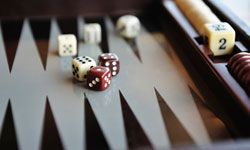Nolan Bushnell, the video game pioneer who invented Pong in the early 1970s, explained the game's runaway popularity by noting that it was "very simple to learn, difficult to master" [source: Singleton]. But Bushnell's theorem, as that principle came to be known in the electronic entertainment industry, actually was no more than a reflection of wisdom that predates our gadgetry by thousands of years.
In an ancient Assyrian carving now in the British Museum, for example, palace guards are shown passing the time by playing the Game of Twenty Squares, invented in the city of Ur in southern Iraq about 4,600 years ago [source: BBC]. That same game is still played today, as are scores of others in which humans toss dice, shuffle cards, and move pieces around boards in pursuit of what might seem to be the simplest of objectives -- but which, if one's opponent is sufficiently skilled and wily, often turn out to be maddeningly difficult.
Advertisement
That seeming paradox is what makes classic games, from chess and checkers to the Asian game of Go, so perennially appealing. As author Jesse Schell explains in his book "The Art of Game Design," such games have what he terms "emergent complexity," in that their simple rules allow players the flexibility to create a multitude of intricate scenarios. At the same time, these games also incorporate small, measured amounts of what Schell calls "innate complexity" -- that is, subtle restrictions that make them more difficult.
Here are 10 prime examples of these seemingly simple, yet delightfully complex, games.





